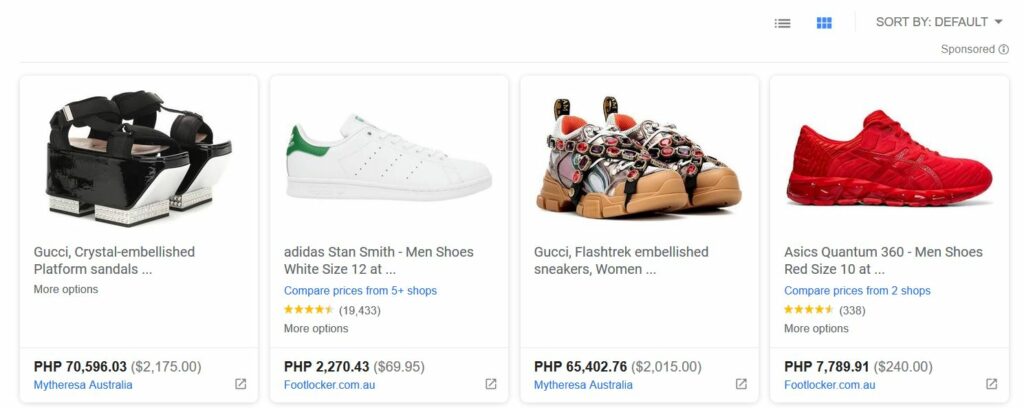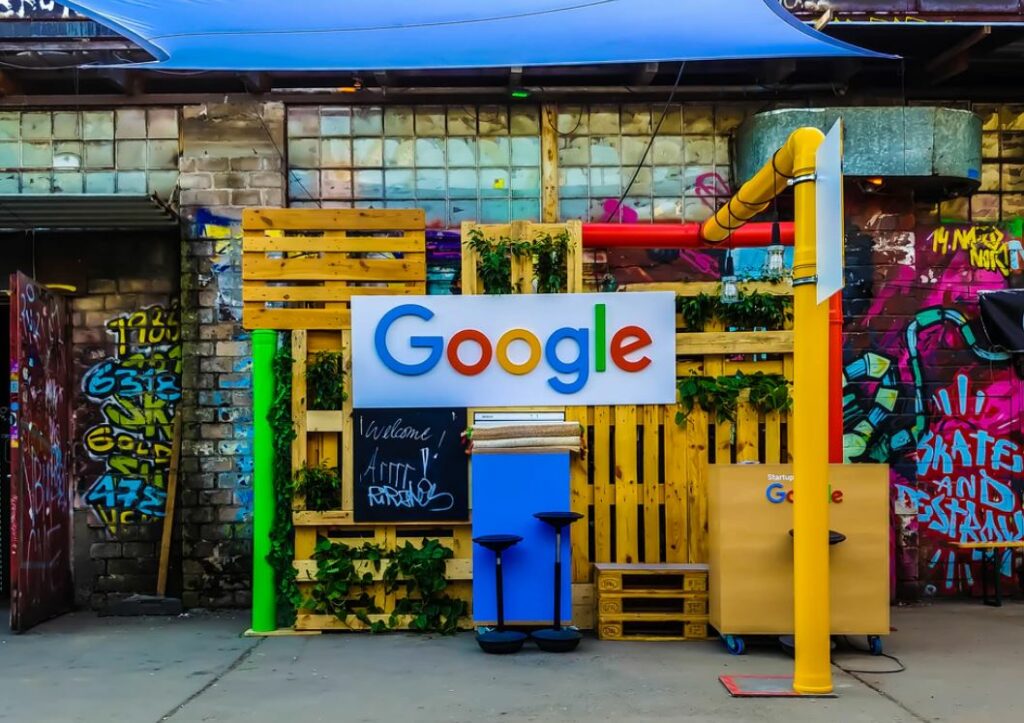Online shopping – almost everyone does it. After all, who doesn’t love having the power to buy anything from sliced bread to a new television set with just a few clicks on their smartphone or PC?
However, have you ever browsed through the Internet looking for a product and wanting to compare various brands and labels? This can be a pretty tedious process if you’re hopping from one online store to another, and not everyone has the patience for it.
This is where online shopping behemoths like Amazon and eBay come into play, alongside a rising contender on the block: Google Shopping. Although Google Shopping is technically more of an ad platform rather than an online marketplace, it offers shoppers the same opportunity to browse a wide variety of products based on their search query. When a shopper clicks on a product link, they’ll be redirected to the online store where they can make the purchase.
For the past eight years, Google Shopping has been making eCommerce businesses pay to list products as a form of advertising. However, last April 21, 2020, Google announced that they’re making it FREE for merchants in the US to sell on Google Shopping.
Wait, what – it’s now free to sell on Google?
Yup, that’s right. Well, in the U.S. anyway.
Google Shopping has been around for nearly two decades but since 2012, eCommerce businesses needed to pay for ad placements on the Google Shopping platform. However, after Google’s big announcement, any online store can list their products and inventory for free on the Google Shopping tab. Paid ads will still be at the top and bottom of Google Shopping, just like in the search results tab, but organic results will now appear in the middle.

Bill Ready, Google’s President of Commerce, told The Verge that they’re aware of the huge number of retailers and small businesses who are ready to serve online shoppers, yet don’t have a great way to connect with them digitally. By making Google Shopping free, Google can help more shoppers find the products they’re looking for, and also help bring relief to the retail and small business ecosystem.
Ready also says that they’ve been working for some time on making Google Shopping free, but they were pushed to accelerate the plans due to the ongoing coronavirus pandemic. As many physical stores face threats due to the crisis, digital commerce has become a lifeline for majority of the retail sector. Google says that it’s great way to reconnect consumers with struggling businesses who cannot afford to pay for ads during this time, especially since smaller businesses can now show up in search results.
How will the new program work?
Distribution of ads and free listings
As mentioned above, paid shopping ads remain at the top and bottom of the Google Shopping tab. There might be changes in the layout in the future. The main page of Google Search does not change, and the carousels of product listing ads continue to display paid ads only.
The Google Shopping hub in the U.S. will see the changes in the distribution of ads and free listings, specifically on the search results pages. However, the hub’s homepage, which generally features curated product themes, will continue to feature paid ads only. At least, for now.
Product feed-powered
Like the paid ads, the free listings are powered by product data feeds that are uploaded to Google Merchant Center. Brands that already submit product feeds through the Google Merchant Center are automatically eligible for the free listings.
To view how much traffic they’re garnering through these placements, brands can monitor the numbers reported in the Surfaces by Google tab (as noted by Google’s updated help center article). Retailers who have monopolised the Google Shopping tab in the past with aggressive bidding should continue to monitor their paid performance to see any growth or decline in their paid Shopping traffic.
New PayPal integration
As part of the effort, Google also announced a partnership with PayPal. This move will help bring more merchants to the platform, as retailers can simply link their existing accounts to accept online payments. The partnership also allows Google to efficiently verify trusted merchants by pulling in seller details faster.
Is this move really because of COVID-19?
While Google says that they’re making it free to sell on Google Shopping so they can help smaller retailers caught up in the COVID-19 crisis, it’s highly likely that they had their eye on the eventual eCommerce boom. As locked down consumers are forced to make online purchases rather than braving physical stores, Google realised that it’s losing out in the race on becoming the top destination for product search.
Right now, Amazon and eBay remain the dominant players in the game and it’s unclear if Google Shopping even comes third in the US, where it’s also competing with retail giants like Walmart and Target.
Additionally, consumers still prefer organic results over paid ads. Google made a huge mistake in 2012 when they wanted to fully monetise the shopping real estate on their search engine results. This move backfired as it allowed Amazon to gain an advantage in eCommerce search. Now, Google is looking to claw back market share from Amazon, who was profited millions in advertising dollars and consumers.
While it’s nice to think that Google’s main objective is to help keep businesses afloat amidst the pandemic, this is mostly a power move on Google’s part so that it can gain a boost in the product search race. They just happened to strike gold on the timing of the initiative.
What is the impact on the digital marketing industry?
Google states that they want to provide a measure of relief for small businesses struggling during the crisis and lay the groundwork for a healthier retail ecosystem, but search marketers say the truth is more nuanced.
Why? It’s because at the end of the day, Google stands to benefit from this PR move as it will likely gain more users and a bigger market share along with advertising profit. The profit will mostly come from advertisers and digital marketers who sign up to sell products via Google Shopping’s free listings. They will then see the high ROI and begin spending on paid Google ads.
It’s a loss for digital marketers who have paid to play on Google, and will now have increased competition from those who aren’t running paid campaigns on Google. But in some ways, it’s also a win because those marketers who spent money will be given additional free exposure, free sales, and quick organic traffic as they will be auto-opted into the program. Putting those into consideration, it’s really a mixed bag for the digital marketing industry.
Since organic listings on the Google Shopping tab are still new, it’s also tough to determine how Google is going to choose the products that will show up. Now will be a good time for digital marketers to revisit their brand’s product feeds to ensure that they’re giving Google as much relevant and value adding product information as possible. This also means that SEO teams and PPC teams should have a fully joined-up approach to maximise a brand’s visibility.
But this is only available in the US, what about Australia?
The new free option for Google Shopping was launched in the US last April 27, 2020, and Ready says it will be rolling the option worldwide by the end of the year.
This will immediately have the most beneficial impact on new online retailers and small businesses in Australia, as the biggest barrier to entry in Google Shopping (cost) just got thrown out the window. However, if you rely on Google Shopping campaigns and don’t prioritise SEO, you could be in for a rough ride.
Standing out in this new virtual space, with multiple eCommerce businesses vying for a position, will require intensive keyword research. If you haven’t been paying attention to SEO and you want an organic spot on Google Shopping once it becomes free, now is a good time as any to grow and nurture an SEO campaign for your online store.
Google Shopping Post COVID-19
Whatever Google’s motives, the fact remains that this is a great opportunity for retailers. Google’s decision to make results within the Google Shopping tab free is an unprecedented move in an unprecedented time, offering brick and mortar retailers a chance to go digital.
Yes, it’s a gateway to help generate interest in Google paid shopping campaigns and a response to Amazon’s dominance in shopping, but this will also further grow the global online retail sector. Once it becomes clear how a brand ranks, retailers and digital marketers will have to think of strategies to earn their space among all the paid ads.
Another interesting angle to look at is the trade-offs that Google will be prepared to make on their path to becoming the default shopping engine for online customers. With the option of making Google Shopping free, they’re sacrificing ad revenue to help retailers navigate the online sphere and create a better shopping experience for users.
As we haven’t yet reached the peak of COVID-19 and Google is still working towards their goal of beating Amazon, what other unanticipated shifts will they make in the coming months? We can only look forward to finding out.
